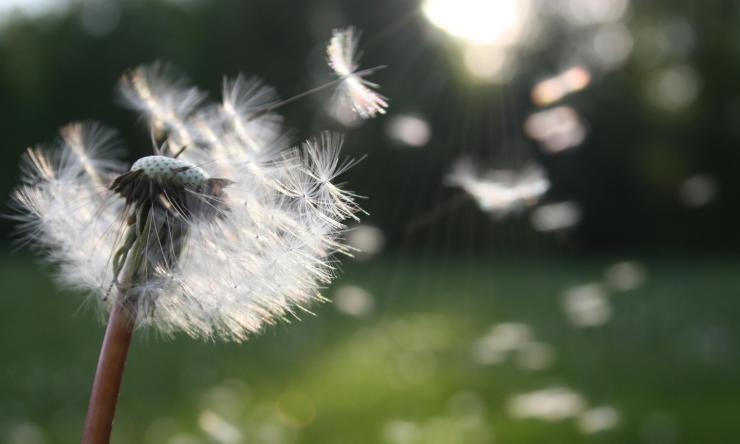Houston allergy data reveals large spike in pollen count over last decade
New data from the Houston area reveals spiking levels of ragweed, elm and cedar elm pollen as well as mold spore counts as we enter the fall season. An allergy expert at Baylor College of Medicine breaks down this information and other trends revealed by allergy data collected in the past decade.
“We reviewed samples collected by the Houston Health Department’s Burkard Spore Trap, and we see that mold and pollen counts have been steadily rising for the past 10 years,” said Dr. Sanjiv Sur, director and professor of allergy medicine at Baylor.
Allergen increases from 2013 to 2023:
Overall pollen – Increased about 10,000 grains of pollen per cubic meter of air.
While this count includes all pollen allergens in the air, it is important to note that October marks the beginning of the ragweed, elm and cedar elm blooms in the area, two common allergens that affect Houstonians.
Ragweed pollen – Increased about 1,900 grains of pollen per cubic meter of air.
Elm and cedar elm – Increased about 8,500 grains of pollen per cubic meter of air.
In all instances of recording these allergens, each instance could be classified as months of having heavy or extremely heavy levels of allergens in the air.
Houston is no stranger to high year-round mold spore counts; however, the 10-year data collection shows just how high these levels have grown. Last October’s mold spore count was 10,000 spores per cubic meter of air higher than in 2013.
“Further study is needed to fully understand the causes behind these upward trends; however, they do coincide with higher yearly average temperatures, which directly impacts weather patterns and allergen bloom,” Sur said. “I would think such major rises in numbers should take 50 to 100 years, not 10 years. Looking at this year, we are expecting to follow the upward trend and may see spikes in mold for August as a result of Hurricane Beryl.”
“Anecdotally, I have been seeing patients experiencing flares of rhinitis (runny nose), asthma and conjunctivitis (irritation in the eyes) as early as the middle of February,” said Dr. Evan Li, assistant professor of allergy medicine at Baylor. “I believe it is the warming of our weather leading to the earlier onset of the spring allergy season.”
Keeping allergies at bay
The Baylor allergy team reminds Houstonians that though allergy counts may be high, relief is readily available. Mild to moderate symptoms can be treated with over-the-counter non-drowsy antihistamines, like cetirizine, loratadine or fexofenadine. If nose-blowing causes inflammation of the sinuses, nasal steroids can help open the airways. A nasal rinse using distilled water saline solution remains one of the most effective ways to drain nasal passageways where pollen tends to collect.
If these options prove ineffective, a visit to your allergist may be necessary to prescribe medications to combat allergies or begin an immunotherapy regimen.










